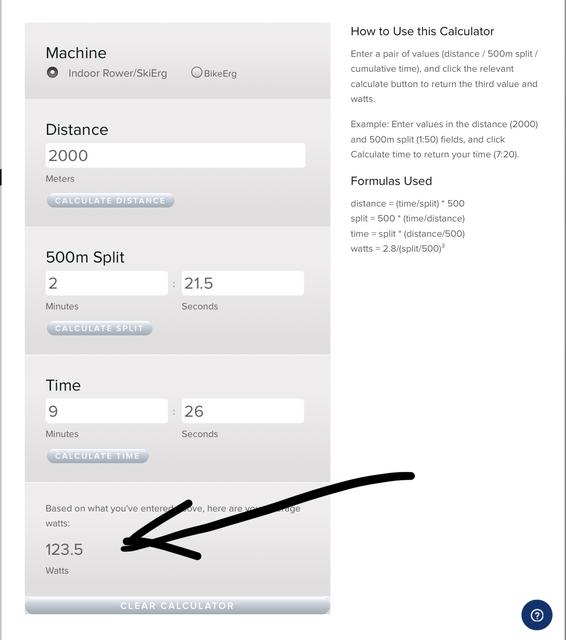20 to 30’ continuous on the rower at 45 to 65% of your current 2k power (50-86W) would complement cf wods. Start by alternating cf and rowing days if possible. If not, downsize the same day rowing workout.



Thanks! I'm trying to also incorporate what I'm learning in the wods. I dont run because of so much arthritis(!) so I end up on the rower quite a bit. For example today I did 600 m intervals and tried to lengthen the drive and slow the spm. I did ok until after the wall balls. Haha.jackarabit wrote: ↑April 25th, 2019, 12:14 amWelcome to the forum! Saw your question regarding the role of modulated recovery in producing drive+recovery times which in turn produce rating (strokes/minute) answered elsewhere.
20 to 30’ continuous on the rower at 45 to 65% of your current 2k power (50-86W) would complement cf wods. Start by alternating cf and rowing days if possible. If not, downsize the same day rowing workout.

I look at the slow stuff as the intensity that best builds a productive rowing stroke, tends to maximize power per stroke, encourages conversion of fat rather than carb as prime fuel for cellular metabolism, and develops dogged aerobic endurance. Continuous LIT sort of faces in the opposite direction from pace or iteration-maximising HIIT, doesn’t it? Therein lies the complementarity to cf work.I'll try adding in the steady state. Do you think that alone will improve my times? Or would I need to do a little more?

LoL @ phrenetic. That is definitely the most appropriate word choice. Love it. Us crossfitters are a little nuts.jackarabit wrote: ↑April 25th, 2019, 12:38 pmI look at the slow stuff as the intensity that best builds a productive rowing stroke, tends to maximize power per stroke, encourages conversion of fat rather than carb as prime fuel for cellular metabolism, and develops dogged aerobic endurance. Continuous LIT sort of faces in the opposite direction from pace or iteration-maximising HIIT, doesn’t it? Therein lies the complementarity to cf work.I'll try adding in the steady state. Do you think that alone will improve my times? Or would I need to do a little more?
Given the performance priorities of cf (speed, power, and phrenetic circuit training) and the arthritis-induced necessity of subbing erg or stationary bike workouts for cf, LICT on the erg is not the obvious or immediately useful choice for you. I don’t believe it will act as a cf performance accelerator short term. It will give you the benefits of a low-impact training which enables high volume combined with low incidence of game over injuries which are the common scenario in resetting or reducing physical training goals. Your call of course. And also your history with arthritis. File it away against the day when a new game is needed.
It is! I would take up parkour, krav maga, and ventriloquism but I’m focused on clearing out the numchuks, k-bells, and seashellsIt's also good just to have something to focus on

jackarabit wrote: ↑April 26th, 2019, 10:41 amIt is! I would take up parkour, krav maga, and ventriloquism but I’m focused on clearing out the numchuks, k-bells, and seashellsIt's also good just to have something to focus on

Apologies for the lack of response and thanks to you and others for the welcome. And yes, my quads in my bad knee do seem to be getting stronger, which is great. But I think that pain in the back of the knee I mentioned was a dodgy hamstring, which finally gave way - ouch! But I'm back on the erg and did my first 10K row today, which I am very pleased with myself about! Might even post it in that PB thread- even though I find what those guys post in there rather intimidatingTenshuu wrote: ↑March 18th, 2019, 12:01 pm
Do you feel the injured knee seems to be strengthening up in it's own way at all? Or do you try to avoid all pressure on that leg during rowing?
I hope someone else might have some tips/suggestions that you haven't thought of, I can't imagine rowing without my kneecap >.<.
